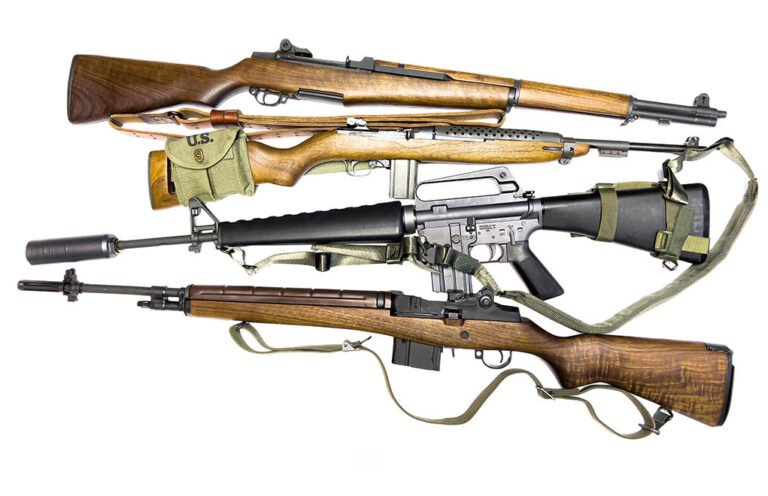
A look at the relationship between suppressors, rifle barrel length, performance and handling.
In 2012, there was anticipated political turmoil, hollow threats of bans, and the popularization of cans for the “average” shooter. It seems we won … soundly.
However, as time has gone on and we’re now solidly in the early golden age of these products, an increasing number of people have started to get a bit discouraged and revisit the necessity of a can on their rifles. Many factors go into determining if a suppressor is right for you and your rifle, and I won’t be the guy to say you simply must have one, as there are some seldom discussed downsides when you try to quiet things down a bit.
The Reality of Suppressors
I won’t shoot myself in the foot in an attempt to appeal to the middle ground folks: Bearing arms is our right, and suppressors are far, far too regulated in this country today. For all the ground we’ve gained, this is largely due to the diligent people creating processes to make it easier to navigate the NFA process rather than reinvent it.
Yes, it’s technically easier to get a can these days from a consumer’s point of view, but to the feds, it remains the same as it was. We aren’t any closer to having these items removed from the NFA as we were more than a decade ago … despite their booming popularity. They’re still a pain to get, and wait times are still upward of 9 months to a year—which is still, and always will be, utterly excessive.
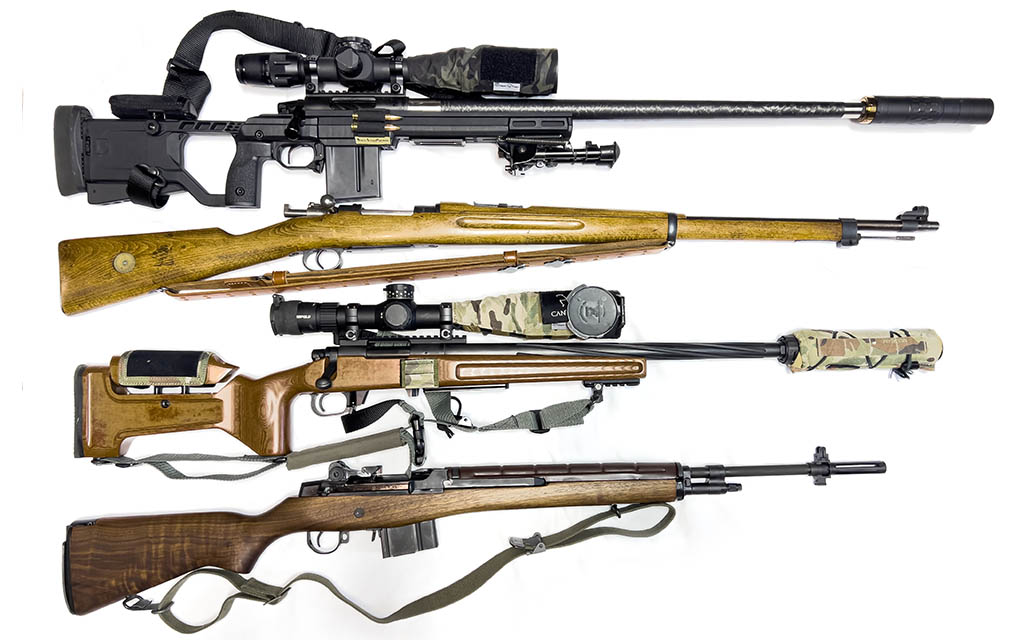
That said, I don’t believe suppressors are as much of a problem solver, or a necessity, as they’ve been portrayed in our own media. I’m approaching suppressors here from a critical evaluation standpoint. Again, this isn’t me saying they’re all trash, or that everyone should own one—it’s hardly that black and white. Not everyone needs (as in a literal sense, not political one) a suppressor, and not every gun benefits from one.
I hate that, for many people, it has become dogmatic if you get critical from an evaluation standpoint: You can absolutely pick the wrong rifle to suppress if it hinders you. Hearing protection isn’t enough of a problem where ballistic performance, handling and portability are concerned. Good ear pro already exists. The advantages of a suppressor—primarily being recoil and noise reduction—shouldn’t immediately be prioritized over everything else that goes into the rifle.
Cans indeed are able to mess with the accuracy and reliability, not to mention cleanliness, of their host rifle. Suppressors can make common gas guns utterly filthy, thus requiring more cleaning more often. Some rifle designs become ungainly and hard to use. An excellent example is the M14/M1A: The rifle is light and points well, but add a pound to the muzzle and it ruins the handling.
Very few companies are designing guns around suppressors (although many are making them suppressor ready), and few suppressor companies are designing cans to go on a specific gun. This has a great deal to do with the fact that most people are buying one suppressor as opposed to dozens. The few among us who have a multitude of suppressors could arguably get away with just a couple good ones, but for NFA junkies like me, variety is the spice of life.
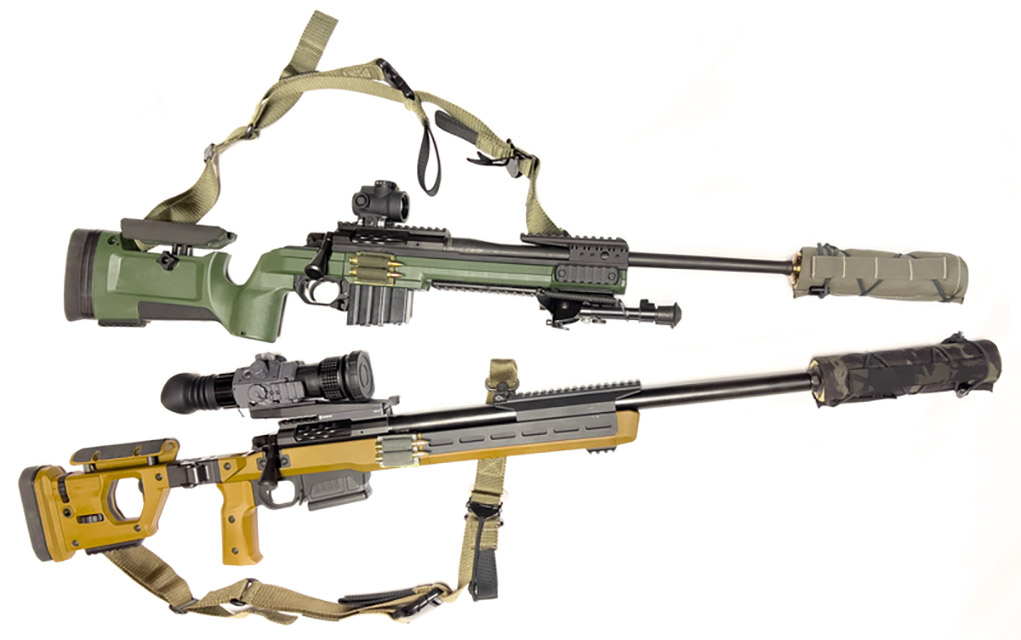
If I truly wanted to have one suppressor, the SilencerCo Hybrid 46M is adaptable to virtually all my rifles and pistols. I could get away using just that one. Knowing this, that suppressor is my last choice in many cases because it’s large and heavy. So, already, I’d be looking for something else for my smaller-caliber rifles and pistols. Universal solutions usually put undue stress on performance.
The Cartridge and Can Conundrum
Recently, we’ve seen a trend to shorter barrels on mainstream rifles, which is a double-edged sword for shooters and suppressors.
I wrote a research paper in college about cutting down a .308 Win. barrel from 26 inches to 13.5 inches—so nearly in half. A decade or more ago, many shooters had never considered a .308 Win. that short; the most common length for this cartridge in that day was 24 inches, which is considered long for caliber today. Twenty inches was considered a compact rifle in those days, whereas today it’s “long” for a .308 at least.
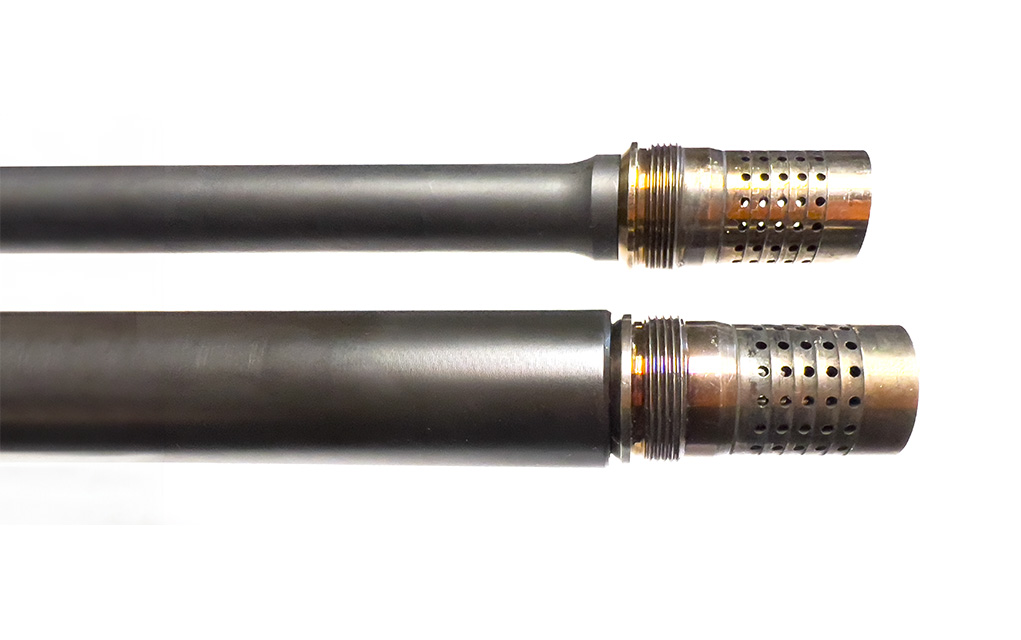
I was shooting MOA at 500 meters with a 168-grain .308 Win. at 2,400 fps from a 13.5-inch pin-and-weld barrel, and that was simply unheard of outside benchrest pistols and other novelties. Short-barreled rifles (SBRs) weren’t mainstream like they are today, and neither were suppressors.
The basis of my research at that time was to prove that barrel length wasn’t the deciding factor in accuracy, to which I was rebuffed by the statement: “Then why aren’t all the F-Class and 1,000-yard shooters using 13-inch barrels if they are so much more accurate?”
To answer that you need to understand there’s a paramount difference between the situation and what technology is suitable for it. Longer ranges do favor longer barrels, but shorter barrels favor suppressors and, at that time, suppressor use in general was virtually unheard of. The basis of my work showed that, at medium distance, there was lots of utility in shorter barrels, but even I abandoned this because it was just too loud in the pre-suppressor era.
Longer barrels, in most cases, deliver better velocity when given identical cartridges. This is generally considered fact, but there’s a point when that length isn’t an advantage. For instance, the .308 Win. is a nearly length-blind cartridge. With factory 175-grain OTM match ammo, the average loss is only around 15 to 20 fps per inch, so you can chop a barrel down to 16 inches and lose maybe 100 fps, generally speaking.

I’m currently getting 2,600 to 2,700 fps in an 18-inch barrel with most factory .308 Win. loads. I gain basically nothing going longer, considering that I’m also shooting with a suppressor in 99 percent of cases. I’d rather have the can on the end instead of the extra 100 fps, because inside 500 meters, there’s no functional difference. If I wanted to make it up, I could very, very easily handload up to higher velocity.
Suppressors, Barrel Length and Contour
Barrel length and contour come heavily into play when it comes to understanding the utility of a suppressor. You don’t need a full M24 profile tube to support a suppressor but, in general, adding a pound or so of weight to the end of a skinny barrel will induce less-than-ideal results. A barrel is a suspended beam structure, and it bears weight along its length; a shorter barrel will always be stiffer than a long one of the same contour, making it more ideal to bear weight repeatably over time and shots. Having a thick, heavy barrel isn’t ideal on a rifle you plan to walk with, and having a too-short barrel will ultimately limit the effectiveness of any cartridge except … those rare birds meant to work with them.
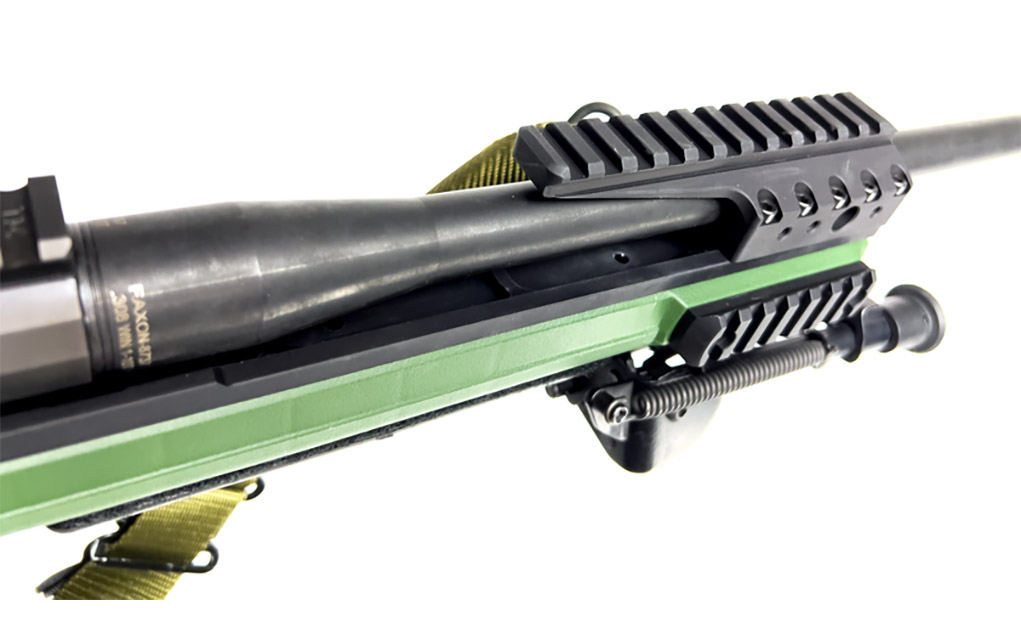
While there isn’t an ideal barrel length that benefits from a suppressor, the general rule is this: The shorter the barrel the louder your gun will be. However, at a point, extra length doesn’t add up to it being quieter.
For instance, my longest .308 has a 27-inch barrel, and my shortest has a 13.5-inch. The noise levels are noticeably different with the same suppressor and ammunition. Yet, the second I put that same ammo and can on an 18-inch .308, it’s suddenly the best of both worlds—just as handy as the 13.5-inch and as quiet as the 27-inch. I think 18 inches is the most ideal length for a suppressed .308, either in a medium or sporter contour like on the Faxon FX7 in this article. I like less barrel weight for suppressor use; it makes the balance better and the rifle easier to point.

Carbon-fiber barrels solve a huge amount of problems with suppressor use. You can get the length you want and a larger contour for stiffness … without gaining tons of weight. I’ve found that carbon-fiber barrels are the best all-around for standard rifles and really shine in short, fat profiles. Suppressed use with carbon-fiber barrels is a joy, and I’m slowly beginning to transition many of my field guns to this barrel type. Not only do they manage heat better than steel barrels, but their inherent stiffness can also support the weight of even the heaviest suppressors for long strings of fire if necessary.
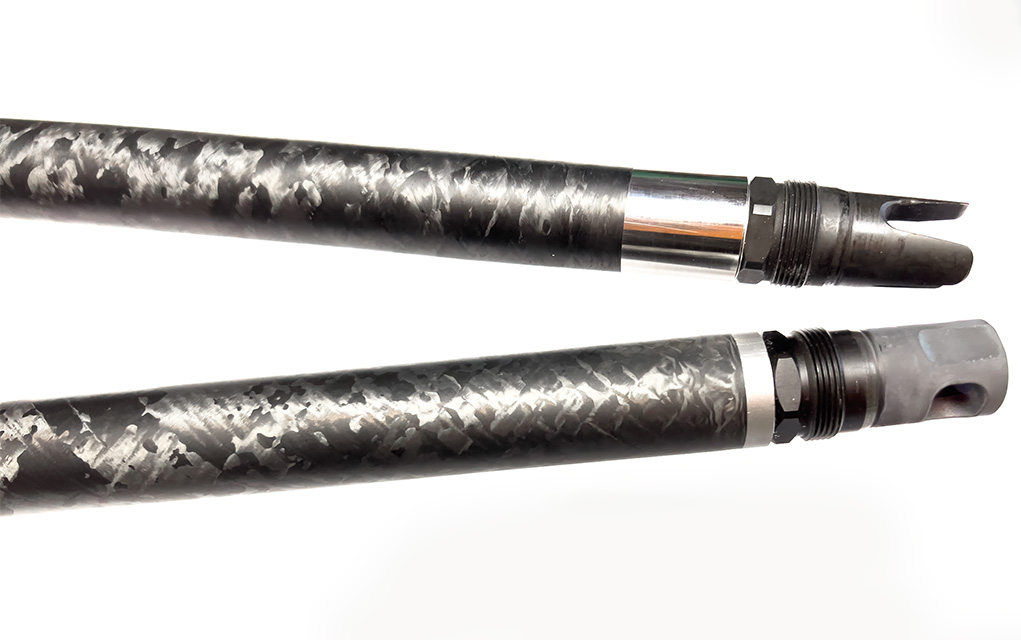
Either in a bolt gun or AR-10, my ideal suppressor barrel would be a 1:10 twist, M24 contour .308 Win. barrel at 17 inches length from shank to muzzle so that with suppressor mount attached would still be at 18 inches overall.
Now, where was my contact card for CarbonSix barrels?
Editor's Note: This article originally appeared in the Suppressor Special 2024 issue of Gun Digest the Magazine.
More On Suppressors:
- The Suppressor: How They're Made, How They Work, And How To Buy One
- Best AR-15 Suppressor Options For A Quiet Advantage
- Handgun Gear: Best 9mm Suppressor Choices
- Best .22 Suppressor Choices To Mute Your Plinker

Next Step: Get your FREE Printable Target Pack
Enhance your shooting precision with our 62 MOA Targets, perfect for rifles and handguns. Crafted in collaboration with Storm Tactical for accuracy and versatility.
Subscribe to the Gun Digest email newsletter and get your downloadable target pack sent straight to your inbox. Stay updated with the latest firearms info in the industry.

![Best Concealed Carry Guns In 2025 [Field Tested] Wilson Combat EDC X9S 1](https://gundigest.com/wp-content/uploads/Wilson-Combat-EDC-X9S-1-324x160.jpg)


![Best 9mm Carbine: Affordable PCCs [Tested] Ruger Carbine Shooting](https://gundigest.com/wp-content/uploads/Ruger-Carbine-Shooting-100x70.jpg)
![Best AR-15: Top Options Available Today [Field Tested] Harrington and Richardson PSA XM177E2 feature](https://gundigest.com/wp-content/uploads/Harrington-and-Richardson-PSA-XM177E2-feature-100x70.jpg)
